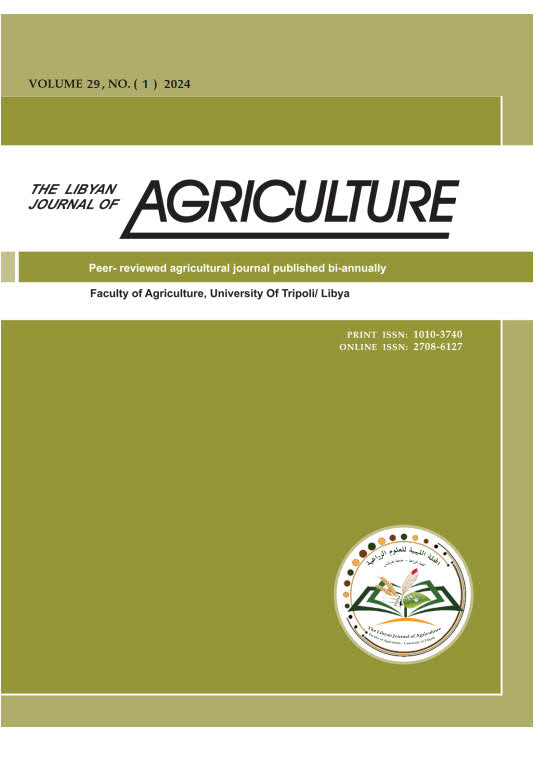Effect of Humic Acid Concentrations and Methods of Applications on Growth and Development of Arugula vegetables (Eruca sativa Miller)
Main Article Content
Abstract
Eruca sativa commonly is known as arugula, which is one of the plants that have a nutritional and health value. However, arugula vegetables require nutrient-rich, well-drained soil, as poor or poorly drained soil can cause root rot and yield loss. Therefore, this study investigates the effects of various humic acid concentrations (HAC) and application methods (HAM) on the growth of Eruca sativa. Plants were cultivated in plastic pots under semi-field conditions at a farm in the Jouddam area, which is located around Zawia city, Libya. The plants were treated either by foliar spray or by irrigating with different humic acid (HA) concentrations (0, 0.25 and 0.5) %. The treatments were arranged in a factorial experiment following a completely randomized design with four replicates. Humic acid was applied three times during the growing season (at 25, 35, and 45) days after sowing. The findings showed that all evaluated traits were significantly affected by the applied treatments. Growth and yield traits demonstrated significant responses to both humic acid concentrations and application methods (P< 0.001– 0.01). The highest values of growth and yield traits were recorded for plants irrigated with a 0.5% humic acid compared to the control and other treatments. Whereas, the control recorded the lowest trait values. An increase in humic acid concentration consistently enhanced all studied traits. Besides, both application methods (spraying and irrigation) improved growth traits compared to the control, with irrigation proving more effective than foliar spraying. This study concludes that humic acid is highly beneficial for Eruca sativa, enhancing growth conditions and supporting robust plant production.

